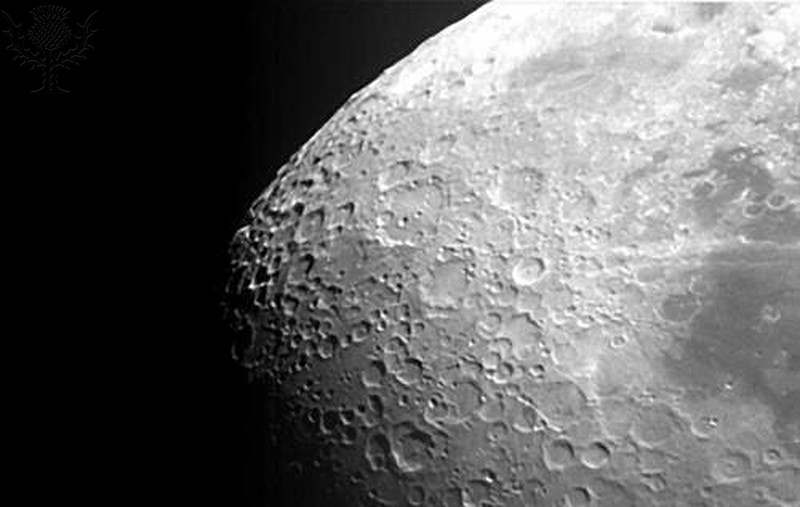
Photo by Photo Researchers on Britannica ImageQuest
The Moon has fascinated mankind for many centuries. In 1610 Galileo Galilei devised his own version of a magnifying tube (telescope) and turned it to the heavens, which began the age of telescopic astronomy.
Here are ten interesting facts about the moon.
- The moon is Earths’ only natural satellite.
- The average density for the moon is 210.4 pounds/cubic foot (3,340 kg/m3). The Moon consists of rocks and metals with deposits of frozen volatiles (including water ice).
- The equatorial diameter of the Moon is 2,160 miles (3,476 km). and a mass of 1.621 x 1023 pounds (7.350 x 1022 kg).
- The Moon travels around Earth at an average distance (center-to-center) of 240,250 miles (384,400 km). We always see the same side/face of the Moon.
- Scientists believe that the Moon was formed more than four billion years ago.
- The moon has quakes, too. They are called Moonquakes and are the result of gravitational stresses.
- The average surface temperature of the Moon is about –4°F (–20°C). It can get very cold, as low as –400°F (–240°C) in the shadowed regions.
- There’s water on the Moon. This is in the form of ice trapped within dust and minerals on and under the surface of the Moon.
- The Moon is drifting away from the Earth.
- The Moon has large supplies of silicon, iron, aluminum, calcium, magnesium, titanium, and oxygen. Lunar soil and rock can be melted to make glass.